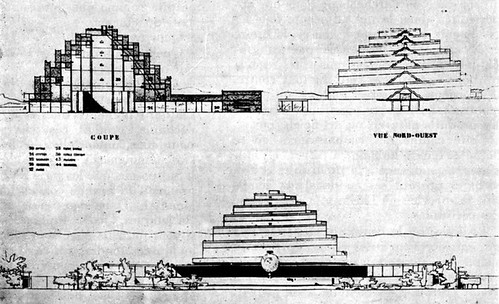Otlet regarded the project as the centerpiece of a new 'World City' — a centrepiece which eventually became an archive with more than 12 million index cards and documents.
If the task was already huge when Otlet developped his ideas, the later evolution of medias made impossible the target to be met. But some consider Mundaneum a forerunner of the Internet.
 The Mundaneum in Mons, Belgium. More photos on dalbera.club.fr/mons/mundaneum/index.htm
The Mundaneum in Mons, Belgium. More photos on dalbera.club.fr/mons/mundaneum/index.htmOtlet commissioned architect Le Corbusier to design a Mundaneum project to be built in Geneva, in 1929. Drafts were made for a whole city on the hills of the swiss capital. The World Museum, centerpiece of the complex, was meant to narrate, on a single chronological axis going from prehistory to today, an all-encompassing description of Human creation, by indifferently displaying pictures, original objects or facsimiles.
This project is the first, at least in diagram-plan, using the Spiral-museum typology, later recurring in a few Le Corbusier's museums. Its main feature is the very rigid and introverted corridor-shaped chronological exhibition path, going from the centre of the spiral and top of the building, towards its periphery, reaching the groundfloor at its end.

No comments:
Post a Comment